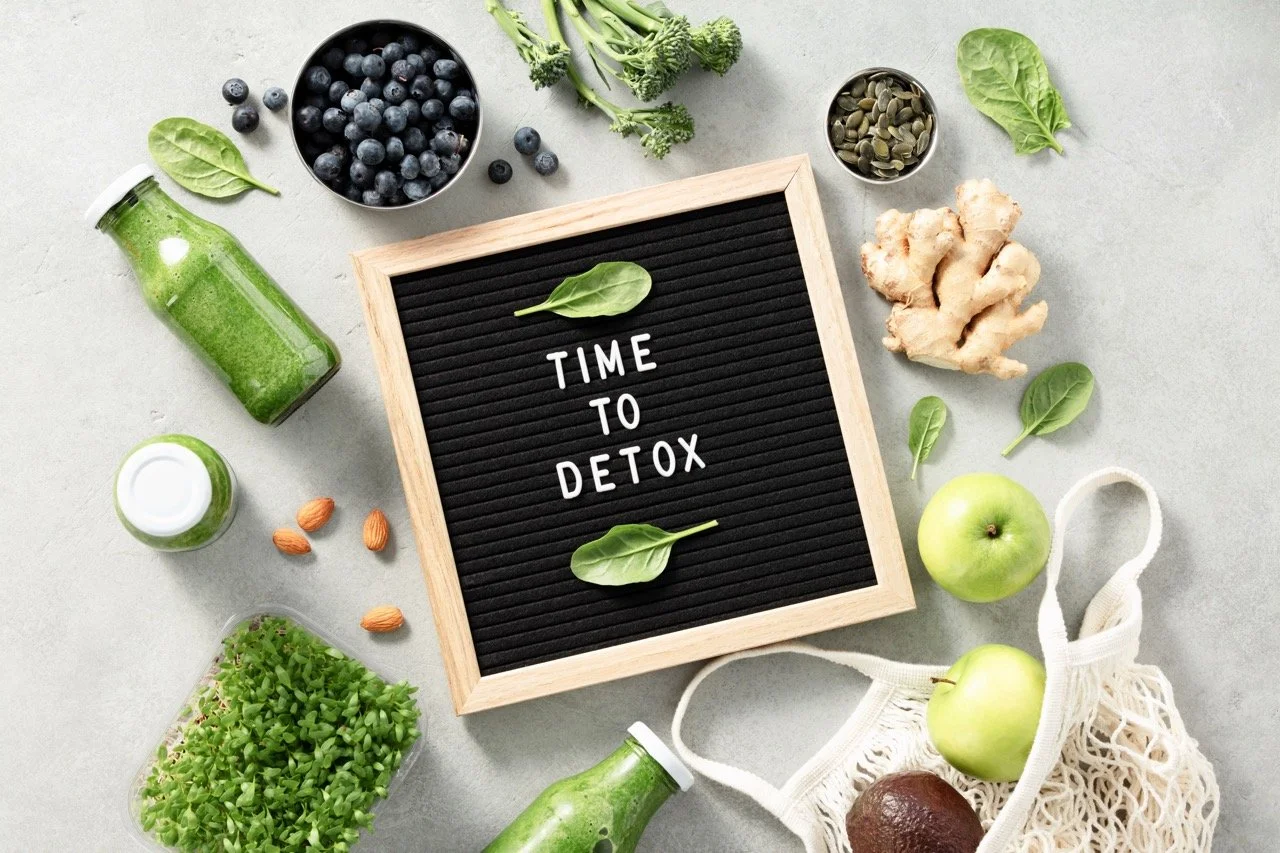Invisible Invaders - Part III: Detoxing the Invisible
A three-part series where we will be discussing “Invisible Invaders”…
How to Support Your Body in Clearing Microplastics and Endocrine Disruptors
We live in an era of synthetic abundance. From the plastic packaging on our produce to the scent in our lotions, our world is saturated with man-made chemicals that have made their way into our bodies—often without our knowledge. Two of the most concerning are microplastics and endocrine-disrupting chemicals (EDCs).
Studies from Yale, Stanford, and experts like Dr. Tracey Woodruff highlight how pervasive these substances are and the risks they pose to hormonal balance, fertility, metabolism, and long-term health. While complete avoidance is nearly impossible, you can support your body’s natural detoxification systems to minimize accumulation and reduce harm.
First, a Recap: What Are We Detoxing?
Microplastics
Tiny plastic particles less than 5mm in size, microplastics originate from:
Degraded plastic packaging
Synthetic clothing
Personal care products
Contaminated food and water
According to Yale Sustainability (2021), microplastics are now found in human lungs, blood, placentas, and feces, raising concern about systemic and cellular impacts, including inflammation and toxic chemical exposure.
Endocrine Disruptors
EDCs interfere with hormones and may mimic, block, or alter hormonal signals. Common ones include:
Bisphenol A (BPA) in plastic containers
Phthalates in fragrances and vinyl
PFAS in non-stick cookware and packaging
Parabens in cosmetics
Pesticides in non-organic produce
Dr. Tracey Woodruff, PhD emphasizes that even low-level, consistent exposure—especially during development—can contribute to infertility, cancer, metabolic disorders, and neurodevelopmental issues (Woodruff, 2023).
Can You Really Detox from These Substances?
Yes—but not with fad cleanses or “miracle” supplements.
Detoxification is a continuous, natural process carried out by your liver, kidneys, skin, lungs, gut, and lymphatic system. But these systems can become overwhelmed by persistent, bioaccumulative chemicals like EDCs and plastic-derived toxins.
The key is to:
Minimize further exposure
Support natural elimination pathways
Enhance cellular resilience with nutrients and lifestyle choices
Step 1: Reduce Ongoing Exposure
Before focusing on detox, stop the leak. Here’s how to reduce your daily intake of microplastics and EDCs:
Switch to glass or stainless steel for food and drink storage
Avoid microwaving plastic containers
Use natural personal care products free of parabens and synthetic fragrances
Choose organic produce to lower pesticide intake
Filter your water with a carbon or reverse osmosis system certified for microplastics and PFAS
Say no to thermal receipts, which often contain BPA
Use HEPA filters and dust regularly—EDCs can settle in household dust
Step 2: Support Liver Detoxification
Your liver is your primary detox organ, converting fat-soluble toxins into water-soluble compounds that can be excreted. Support it by:
Key Nutrients
Glutathione: Crucial for detox enzyme pathways. Found in cruciferous vegetables and produced in the body from cysteine, glycine, and glutamate.
Sulfur-containing foods: Garlic, onions, broccoli, cauliflower, and cabbage enhance Phase II liver detox.
B vitamins (especially B6, B9, B12): Help process toxins and support methylation.
Choline (eggs, liver, legumes): Aids fat metabolism and liver function.
Habits
Avoid alcohol and processed foods, which tax the liver
Consider supplemental milk thistle, NAC (N-acetylcysteine), or alpha-lipoic acid under practitioner guidance
Step 3: Optimize Elimination Pathways
Gut
If you’re not pooping daily, you’re not detoxing efficiently.
Eat fiber-rich foods: Flaxseed, chia, leafy greens, oats
Include fermented foods: Sauerkraut, kimchi, yogurt to support the microbiome
Stay hydrated to help stool move easily
A healthy microbiome also helps break down estrogens and chemicals before they’re reabsorbed.
Kidneys
Flush out water-soluble toxins via urine.
Drink filtered water consistently
Add lemon or electrolytes to boost mineral balance
Skin
Sweating is a lesser-known but highly effective detox route.
Exercise regularly to raise core temperature
Use infrared saunas (as supported by some emerging research) to mobilize stored toxins
Dry brushing and hot-cold showers can stimulate the lymphatic system
Step 4: Reduce Oxidative Stress and Inflammation
Many chemicals and microplastics trigger oxidative damage, weakening cellular defenses and making detox harder.
Anti-inflammatory, Antioxidant Tools:
Turmeric/curcumin
Green tea (EGCG)
Resveratrol (found in berries and grapes)
Omega-3 fatty acids (especially from wild-caught fish)
These compounds support mitochondrial health and help counteract damage from persistent organic pollutants.
Step 5: Sleep and Stress Management
Sleep is when the brain detoxifies via the glymphatic system, and cortisol regulation affects liver metabolism.
Prioritize 7–9 hours of sleep
Keep a consistent circadian rhythm
Practice meditation, yoga, or deep breathing to regulate stress hormones
Chronic stress also impairs detox pathways, increases oxidative stress, and depletes essential nutrients.
Functional Medicine Takeaway
Functional medicine emphasizes root-cause resolution, and toxic load is a crucial root to investigate. If you’re dealing with:
Fatigue
Brain fog
Hormonal imbalance
Weight gain
Unexplained inflammation
…it may be time to evaluate environmental toxin exposure and strengthen your body’s natural detox capacity.
Testing options like urinary phthalates, BPA, or glyphosate levels are available through some functional labs if you're working with a practitioner.
References (APA 7)
Stanford Woods Institute for the Environment. (2022). Understanding microplastics and human health: Our emerging understanding. Stanford University. https://woods.stanford.edu/research/environmental-health/microplastics
Woodruff, T. J. (2023). Environmental exposures and reproductive health. UCSF Program on Reproductive Health and the Environment. https://prhe.ucsf.edu
Yale Office of Sustainability. (2021). Microplastics and human health. Yale University. https://sustainability.yale.edu/news/microplastics-and-human-health
When working with MotherRoot Integrative Wellness, we will develop a personalized plan for your long-term relief.
This information should never substitute medical advice or go against any professional medical recommendations. It is important to seek guidance from qualified healthcare providers for personalized care tailored to your unique health needs. Integrative approaches can enhance well-being, but they should always complement, not replace, traditional medical advice and treatment plans. Listening to your body and consulting with professionals is paramount in maintaining a balanced approach to health and wellness.




